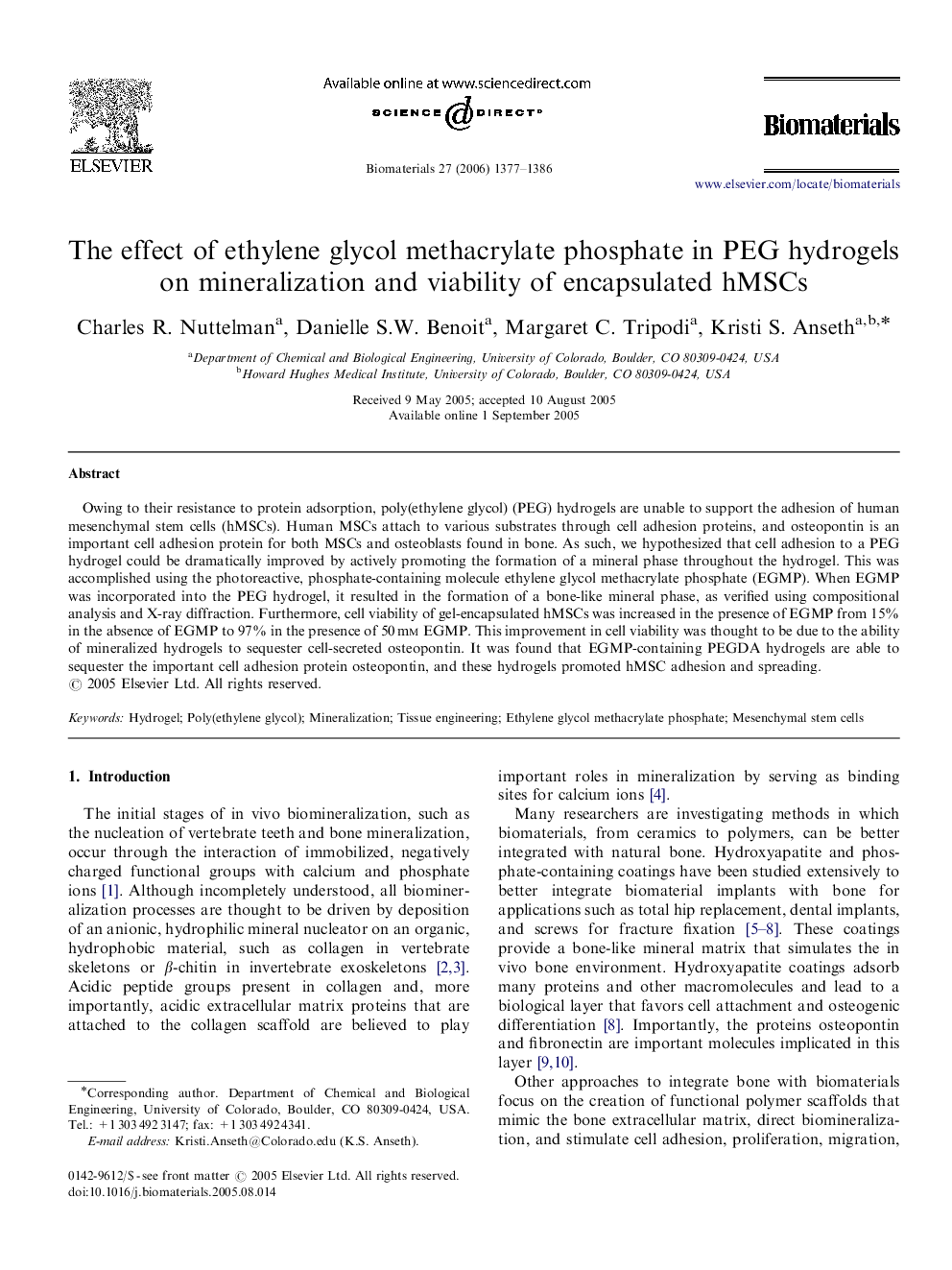| کد مقاله | کد نشریه | سال انتشار | مقاله انگلیسی | نسخه تمام متن |
|---|---|---|---|---|
| 11547 | 747 | 2006 | 10 صفحه PDF | دانلود رایگان |

Owing to their resistance to protein adsorption, poly(ethylene glycol) (PEG) hydrogels are unable to support the adhesion of human mesenchymal stem cells (hMSCs). Human MSCs attach to various substrates through cell adhesion proteins, and osteopontin is an important cell adhesion protein for both MSCs and osteoblasts found in bone. As such, we hypothesized that cell adhesion to a PEG hydrogel could be dramatically improved by actively promoting the formation of a mineral phase throughout the hydrogel. This was accomplished using the photoreactive, phosphate-containing molecule ethylene glycol methacrylate phosphate (EGMP). When EGMP was incorporated into the PEG hydrogel, it resulted in the formation of a bone-like mineral phase, as verified using compositional analysis and X-ray diffraction. Furthermore, cell viability of gel-encapsulated hMSCs was increased in the presence of EGMP from 15% in the absence of EGMP to 97% in the presence of 50 mm EGMP. This improvement in cell viability was thought to be due to the ability of mineralized hydrogels to sequester cell-secreted osteopontin. It was found that EGMP-containing PEGDA hydrogels are able to sequester the important cell adhesion protein osteopontin, and these hydrogels promoted hMSC adhesion and spreading.
Journal: Biomaterials - Volume 27, Issue 8, March 2006, Pages 1377–1386